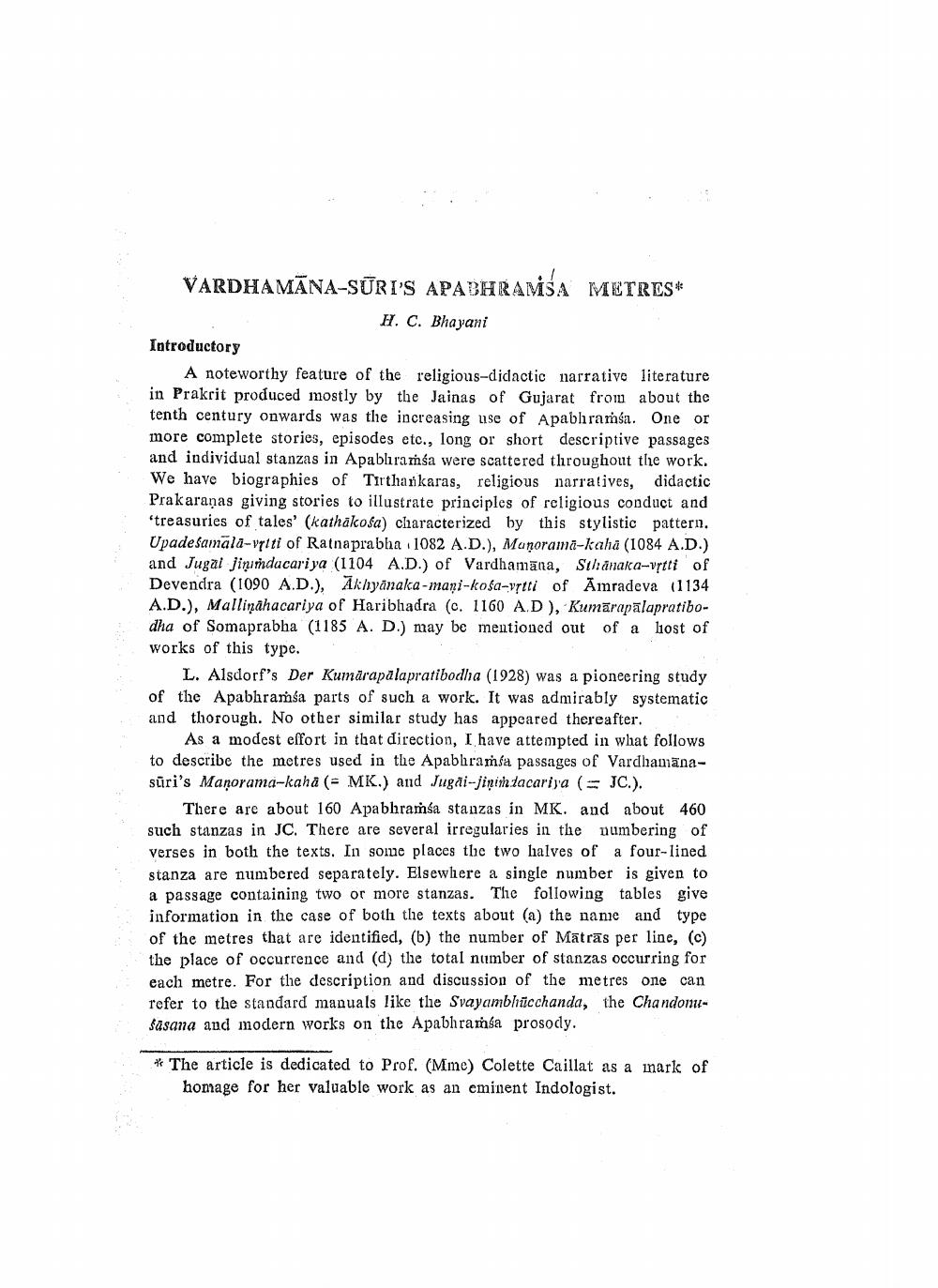________________
VARDHAMANA-SŪRI'S APABHRAMSA METRES"
H. C. Bhayant
Introductory
A noteworthy feature of the religious-didactic narrative literature in Prakrit produced mostly by the Jainas of Gujarat from about the tenth century onwards was the increasing use of Apabhramsa. One or more complete stories, episodes etc., long or short descriptive passages and individual stanzas in Apablıramsa were scattered throughout the work. We have biographies of Tirthankaras, religious narratives, didactic Prakaragas giving stories to illustrate principles of religious conduct and "treasuries of tales' (kathakosa) characterized by this stylistic pattern. Upadelamala-vytti of Ratnaprabha 1082 A.D.), Mogorama-kaha (1084 A.D.) and Jugal Jinimdacariya (1104 A.D.) of Vardhamana, Sthanaka-vrtti of Devendra (1090 A.D.), Akaynaka-mani-kola-yrtti of Amradeva (1134 A.D.), Malliyahacarlya of Haribhadra (c. 1160 A.D), Kumarapalapatibodha of Somaprabha (1185 A. D.) may be mentioned out of a host of works of this type.
L. Alsdorf's Der Kumarapalaprattbodha (1928) was a pioneering study of the Apabhramsa parts of such a work. It was admirably systematic and thorough. No other similar study has appeared thereafter.
As a modest effort in that direction, I have attempted in what follows to describe the metres used in the Apabhramfa passages of Vardhamanasüri's Magorama-kaha ( MK.) and Jugal-Jigilacariya (JC.).
There are about 160 Apabhramsa stanzas in MK. and about 460 such stanzas in JC. There are several irregularies in the numbering of verses in both the texts. In some places the two halves of a four-lined stanza are numbered separately. Elsewhere a single number is given to a passage containing two or more stanzas. The following tables give information in the case of both the texts about (a) the name and type of the metres that are identified, (b) the number of Matras per line, (c) the place of occurrence and (d) the total number of stanzas occurring for each metre. For the description and discussion of the metres one can refer to the standard manuals like the Svayambhucchanda, the Chandonusasana and modern works on the Apabhramsa prosody.
The article is dedicated to Prof. (Mme) Colette Caillat as a mark of homage for her valuable work as an eminent Indologist.




